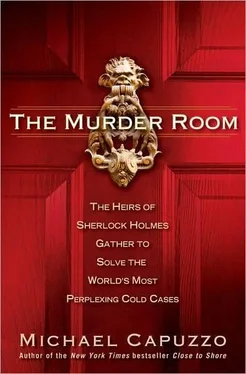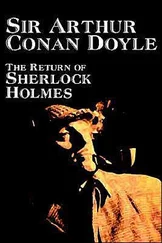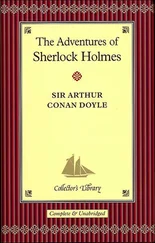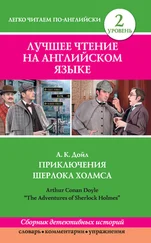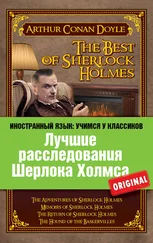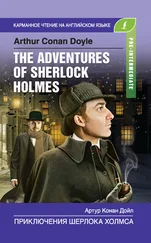Shortly after making The List, a friend introduced him to Jan Proctor, seventeen years old, a slim, pretty, blond go-go girl who’d run away from home in the suburbs and was living alone in the city. Jan had a child, baby Lisa, but didn’t know who the father was. When she’d left home, she’d stolen all the money in her father’s wallet and left Lisa for her parents to raise.
Now she wanted to stop hustling drinks as a stripper and become a model; she needed a composite. She was smart, sassy, and had grown up in the same neighborhood as Frank, in the riverside row houses of old blue-collar Kensington.
Frank was in love.
It was 1968, the summer of love, and “Jan was wild,” Frank recalls. “She was into everything-sex, drugs, you name it.” Wild enough, he figured, to satisfy his gargantuan sexual appetite.
They married a year later on Halloween as a lark, egged on by a friend. Halloween was the perfect day to consummate their hell-raising lifestyle. After the church wedding, the reception started at the notorious 7A bar in Kensington, birthplace of the city’s legendary K amp; A burglary gang and a block from serial killer Gary Heidnik’s future “House of Horrors.” It ended with the cops chasing the booze-laden wedding party around the tombstones at Laurel Hill Cemetery, where Frank had moved the party out of sentiment. He’d once dug graves for his uncle. To memorialize his marriage, he painted an eerie Gothic scene of the sexton’s cottage at night fronted by snow-dusted tombstones.
Marriage to Jan was a stabilizing influence. They had a child, Vanessa, and bought a dilapidated warehouse that had been a butcher’s shop and meat market in the nineteenth century. Frank never stopped having affairs during this period of domestic bliss, but he had a lot fewer of them. “After I got married, it wasn’t that many women.” As he matured, his conquests evolved from weekly trysts with faceless strangers to several good friends. “Any affairs I had were with girls, women, who believed in me like I believed in them; we supported each other. It wasn’t like a one-night stand. Jan said it was like I was bonding with my good friends, bonding with sex. She always encouraged me to have a girlfriend or two. She always liked to be able to spend some time by herself. She’d want me out of the house for a few days.” Jan insisted only that Frank bring his prospective girlfriends by the house for drinks and her blessing. “Jan would say, ‘I like her, bring her by anytime,’ ” Frank said. “I would never bring a woman into the house that Jan didn’t get along with.”
She didn’t even mind when Frank brought home Joan, a tall, buxom blonde, younger than Jan, as his art assistant. Joan in time also became Frank’s accountant, business manager, Girl Friday-and girl Tuesday night, when she made love like clockwork in the artist’s house. “Jan really likes Joan,” Frank explained. “She’d say, ‘Why don’t you and Joan go down to the shore for a couple of days?’ ” Jan seemed relieved to find such a steady, capable woman to help satisfy her husband’s voracious career and sexual needs. For her part, Joan respected Jan’s role as the queen of the household and Frank’s wife. But she was bitterly jealous of the many lesser girlfriends.
But real life intruded quickly into the newlywed romance. Jan’s parents dropped her daughter Lisa, now six years old, on the Benders’ stoop with all her clothes and medical records and said, “She’s yours. We’re getting a divorce.” Now “the biker momma and go-go girl was the ultimate mother,” Frank said. “She put her heart and soul into raising the kids and taking care of the house.” But with two children to feed on a modest freelance photographer’s income, the family was broke all the time.
Frank began to study at night to recover his art career, taking free evening classes at the Pennsylvania Academy, paid for by the Veterans Administration. He studied painting and drawing with the renowned artist Arthur DeCosta, who urged him to do some sculpting to better understand the human form. It would help all his creative work. But Frank struggled with sculpting facial proportions. The academy didn’t offer free night classes in anatomy, and he couldn’t afford to pay for day classes, so he reached out to his friend Bart Zandel, who fingerprinted corpses at the city morgue. Frank offered to shoot a model’s composite for one of Zandel’s favorite strippers if the fingerprinter would give him a tour of the morgue. Zandel agreed.
Frank arrived at the two-story morgue on University Avenue with a sketch pad and calipers in his knapsack. He was excited. He would learn anatomy by studying the human body up close, flesh, bones, and organs revealed, much as his hero Michelangelo once did. Banned by sixteenth-century church authorities from working with dead bodies, Michelangelo procured a key from a friend to the church basement morgue, and spent nights with a candle and a butcher knife studying how the body was assembled.
But as soon as Zandel began leading him through the windowless rooms filled with a cold, sickly sweet air, Frank knew he’d made a terrible mistake.
All around him, bodies on metal tables were grotesquely swollen by disease, shorn by knives and bullets, smashed in automobile accidents, devoured by animals and all the forces of time and decay. He saw a man in the autopsy room who had been hit by a train that cleanly sliced him in two across the thighs. He lifted the white sheet from one gurney and stared openmouthed. In place of a woman’s corpse were three suitcases. The woman, apparently murdered, had been carved up and scattered along the New Jersey Turnpike in the luggage, which held all her remains. There was nothing left of her to put on paper.
In the autopsy room, Frank stared at a torso that was propped high on a block-the breastplate had been removed, the ribs cut. He gawked as an assistant medical examiner plunged his hand deep into the chest cavity and, while feeling around, turned and winked at Frank. The place was surreal.
This is no place for an anatomy lesson, he thought.
But he was fascinated by a body on a gurney in the storage room, toe tag number 5233. It was an unidentified white woman in her fifties, heavyset with dyed hair, a murdered Jane Doe. Her badly decomposed body had been found on October 16, 1977, dumped in a field near Philadelphia International Airport, wearing a herringbone suit, a white blouse, and three bullets in the brain. Frank studied her closely. Her skull was shattered on one side by gunshots; a mass of dried blood and dark blond hair was plastered around the wound. Neither her fingerprints nor missing-person bulletins came up with a match.
It looked like a professional hit. Zandel saw a mass of ruined flesh.
“This is one we’ll never solve,” he said. “Who knows what she looks like?”
But Frank saw something else-a face round and sagged with age, narrow nose, thin lips. He sensed tranquillity about the eyes.
“I know,” he blurted out. “I know what she looks like.”
Dr. Halbert Fillinger, the assistant ME who had winked at Frank, overheard the comment and approached. It was his case, Fillinger said, and he figured they’d never get an identity.
“Did you say you know what this woman looks like?”
“I do,” Frank said. “I see a face in the skull.”
Fillinger stared appraisingly at the blunt young man. “Have you ever done forensic art?”
Frank shook his head. “I don’t even know what the word ‘forensic’ means.”
“Well, you must try.” As they chatted for a few minutes, Fillinger complained that TV shows like the new hit drama Quincy, M.E. starring Jack Klugman as a Los Angeles assistant medical examiner gave a false impression of cases quickly solved and tied up in a Christmas bow. The truth was, many cases went nowhere, often because of lack of identity.
Читать дальше
